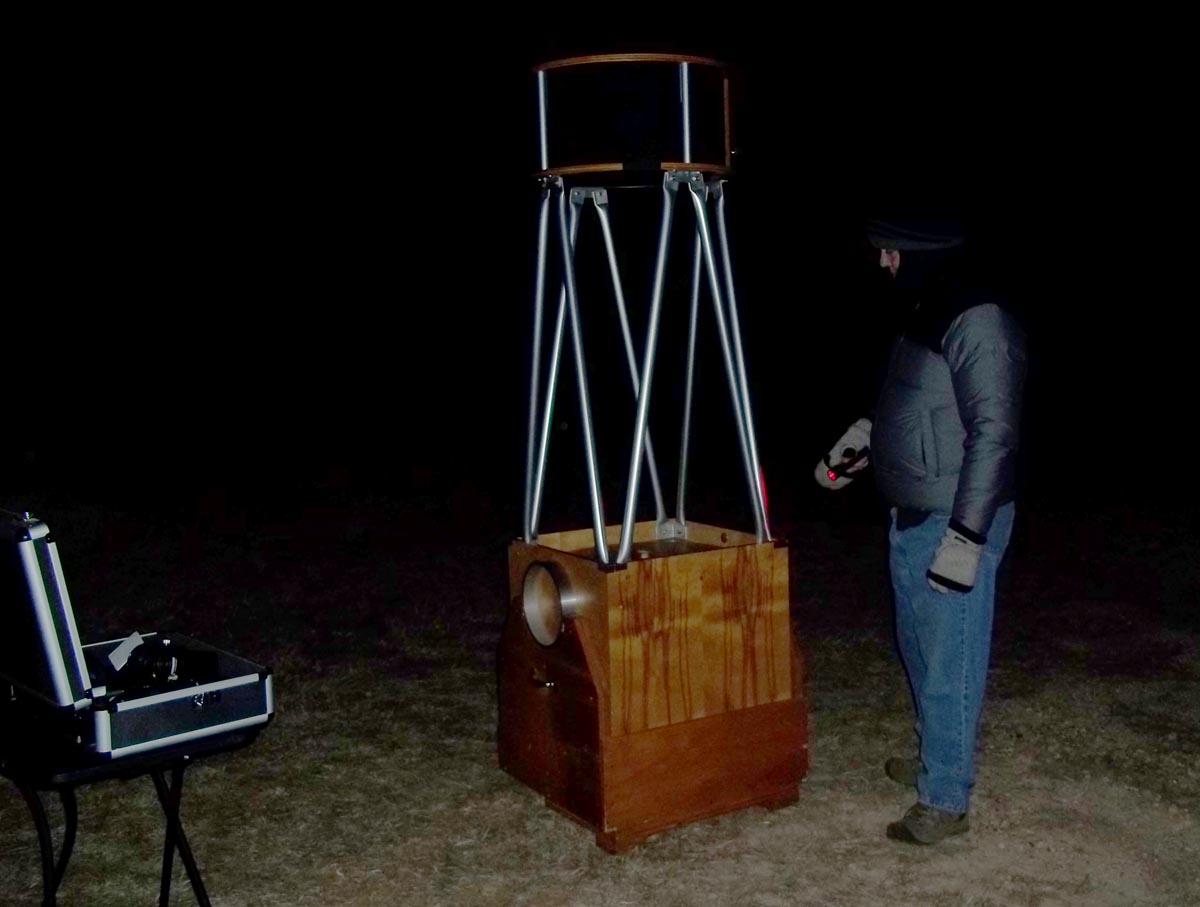
 | SOCO Blog |
08 February 2017
SOCO SUSPENDS NORMAL OPERATIONS
In my blog entry for January 1 of this year, I announced that a new dark-sky site had been found for the establishment of observatories that would take the imaging activities started at SOCO to new levels through bigger telescopes and less light-polluted settings. Alas, as the preparations for these new facilities are beginning to be made, the older facilities of SOCO must be phased out. After almost four years of imaging that has filled the Image Gallery of this website, I am suspending the normal imaging activities of SOCO. This means that I will no longer be imaging deep-sky objects every clear, moonless night as has been my practice in the past. Yes, if the opportunity arises to image something special, I may do that. But, otherwise, the dome of SOCO will remain closed.
Of course, this decision is in anticipation of moving the SOCO observatory building and imaging equipment to the new dark-sky site in King County, Texas. I and my two compatriots in this astronomical venture got our first exposure to astronomical observations at the new site of the 27th of January. On that Friday night (the night before New Moon), we took one of our more modest telescopes, a 20-inch Dobsonian, to the new site (see Figure 1). It was a clear, dark and, as it turned out, very cold night with little wind and excellent observing conditions. I had been to this area (although not this specific site) several times on clear, dark nights, so I already knew sort-of what to expect. This was the first time my compatriots had been in this area at night.

Figure 1. The 20-inch Dobsonian telescope set up at the dark-sky site in King County.
We were not disappointed! The observing conditions were spectacular. The Winter Milky Way stretched across the sky overhead and, though not as bright as the Summer Milky Way that I had seen on previous visits, still displayed details in both bright and dark structures. The Double Cluster in Perseus stood out brightly, as did the set of Messier clusters (M 36, M 37 and M 38) in Auriga. The Andromeda Galaxy (M 31) stood out brightly. One of my compatriots pointed out a bright glowing patch rising in the east— this turned out to be the Beehive Cluster (M 44), brighter than I have ever seen it before. As I have noted on previous visits, there were so many stars visible that it was difficult to make out the constellations.
We estimated that the limiting magnitude was probably around 6. Features in the constellations that go unnoticed at the current SOCO site were strikingly visible. A good example is the curve of stars lying between the body of Orion and the head of Taurus— this represents the animal-skin shield that Orion holds up in his left hand toward the onrushing Bull. This group of stars is largely invisible at the current SOCO site (and the conditions there are not that bad), but was brilliant at the new site. This is why I'm eager to move my imaging equipment to the new site!
We actually spent quite a bit of time just observing with our eyes alone. The objects that we put the scope onto were quite spectacular. I really liked the Orion Nebula (M 42) in the 20-inch scope— it almost had a three-dimensional look in the eyepiece, with the Trapezium blazing at its center. We also put the scope on the nearby Horsehead Nebula (B 33). I could sort-of see it with averted vision, but then again my vision is not the greatest. The Andromeda Galaxy (M 31) was another good target, with hints of dark bands along its edges. The two satellite galaxies of M 31 were easily visible.
The only restrictions to our viewing were things I've never had to deal with at the current SOCO site. First, the planet Venus in the western sky was incredibly bright, so much so that it largely washed out that portion of the sky the way the moon normally does. And— incredibly— Venus cast easily visible shadows onto the ground! I had never seen that before! The second problem was a distinct region of Zodiacal Light along the ecliptic in the western sky. It looked like a regular light dome, stretching maybe 30 degrees above the horizon. At the current SOCO site, such a feature would be lost in the glare from the nearby city of Lubbock. But, at the new dark-sky site, it was easily visible and a bit of an annoyance.
We observed from sundown to around 9:30 PM. Temperatures were near freezing at that time, and I couldn't take much more of it. Luckily, we had the ranch house to duck into to warm up a bit before venturing out into the dark again. But the three of us got a good impression of what astronomy is going to be like at this site. I plan on getting what is the current SOCO observatory set up and operating there in the Spring, with the new observatory and larger telescope maybe before the end of 2017. In any event, this site holds the promise for some really exciting viewing and imaging in the months and years to come.
 Return to SOCO Blog Page
Return to SOCO Blog Page
 Return to SOCO Main Page
Return to SOCO Main Page
Questions or comments? Email SOCO@cat-star.org